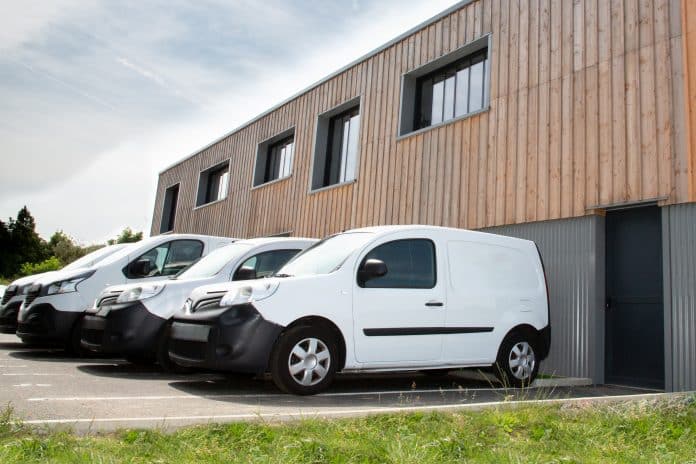By Matthew Dillon, Head of Commercial Vehicles at ALD Automotive| LeasePlan UK
A break-in occurs every 23 minutes in the UK, according to research from Vanmate. And this isn’t going unnoticed – drivers are increasingly taking to social media to voice their frustration about such incidents. From TikTok fury to reports of desperate tradesmen chasing after thieves, stories of van thefts are prompting businesses to question how they can best protect their fleets and drivers.
Understanding the extent of the problem
Vans are an integral part of the UK economy, with SMMT data showing that the light commercial vehicle (LCV) market has grown 8.4% year-on-year, with last month being the best January in three years.
In the last four years, we have seen an increase in the number of van thefts from 4.36 stolen vans (per 1000 registrations) in 2019 to 4.55 in 2022. In fact, last year alone, data from DVLA showed that over 11,000 vans were stolen in the UK. With a 4.4% increase in van thefts, the effects on their mental health and work can be devasting for businesses and drivers.
What’s the true cost to van drivers?
There’s no doubt that the figures are staggering. But what’s concerning is the financial and emotional impact it’s having on both drivers and businesses. 71% of tradespeople have also reported feeling anxious after their tools were stolen. If they’re able to file a police report, 46% of those who have had tools stolen have been able to get some of their tools back.
According to research, van thefts disrupt operations and cost traders £4300. Break-ins also cause additional expenses, requiring an average of £750 spent on repairs.
So, how can fleets protect their vans?
Just as every business is different, every van is too. The good news is that there is security equipment that can suit every type of fleet and budget. Here are just some of the extras that can give much needed peace of mind:
- Alarms – While engine immobilisers are mandatory in England and Wales, vans don’t have to include an alarm and factory equipment can differ. They might have perimetric (doors being opened) or volumetric (changes in pressure, such as broken windows) sensors, while the most advanced alarms have both. Some of these (including aftermarket alarms) also have a Category 1 insurance approval from Thatcham Research, which can also help reduce insurance premiums.
- Door Locks – Additional locks put another barrier between thieves and the contents of your van, making them an effective visual deterrent. There are two types – deadlocks and slam locks. Deadlocks are manually activated while slam locks automatically lock as the door closes.
- Trackers – A tracker won’t protect you from break-ins, but it’s an effective way to make sure your van doesn’t go immediately off-grid if it’s stolen. Thieves have gotten better at jamming or removing these devices, but vehicles are usually recovered within a couple of days, and that’s often enough to deter opportunists.
- Catalytic Converter Locks – Combustion engine vans have a catalytic converter (CAT) to control harmful exhaust emissions. However, they’re not just invaluable to the environment. They contain precious metals like platinum, rhodium, and palladium which means there’s a sizeable black market. Vans are particularly targeted because they have higher ground clearance and a bigger CAT. Thefts can take minutes, immobilising the vehicle and leaving owners with four-figure repair bills. A Cat Lock device or a cheaper marking system will make your van less likely to be targeted. It’s also interesting to note that a national asset database has been created to register catalytic converters. They are marked with a uniquely formulated and heat resistant SmartWater solution.
- Locking Bolts/Nuts – Most vehicles with alloy wheels will have locking wheel nuts, but it’s less common for steel rims. With tyre prices rising and more parts sharing among vans than cars, even the most basic wheels can be desirable for thieves. A set of locking nuts is a small investment compared to the disruption of coming back to find your vehicle on bricks.
It’s important that drivers also understand they have a responsibility to keep their vehicles safe – a toolbox talk on preventing van thefts could include:
- Park Carefully – A well-lit parking spot with CCTV can make all the difference. If you park your van close to a wall, it reduces access for thieves. This is also important when parked at home. While not all van drivers have access to off-road parking, Logistics UK’s survey found if you’re able to park it on a driveway, it can reduce the risk of tool theft from 38% to 24%.
- Lock it up – In 2022, 45% of van drivers said that they don’t lock their vehicles. It’s worth taking a few seconds to tug on the handles and check it’s locked before walking away.
- Nothing on Show – Consider how your van looks to thieves. Leaving valuables on display is a definite no-no. Even seemingly small things, like a few pound coins, can still be attractive to them. If you have an electric van, consider hiding your charging cables as these are valuable and can cause a huge inconvenience if stolen. Remember that your customers aren’t the only people paying attention to your signwriting. Stickers highlighting alarm upgrades and trackers can be very effective deterrents.
- Care for Keys – Thieves are also targeting keyless systems, using a device to relay the key fob’s signal to the vehicle so it opens and starts. Storing your key fob in a signal-blocking Faraday container can prevent this.
- Secure Apps – A growing number of new vans, especially electric models, have smartphone apps that can locate them, check their status, and even unlock their doors. These should be protected by a PIN or password at all costs.
As LCVs continue to increase in demand, it’s imperative to take measures for better security and to protect your van from thieves. We know it’s devastating when your van is stolen and, understandably, there are financial and emotional implications.
However, if your van does get stolen, contact your local police station immediately (dial 101) with the registration number, make, model, and colour. They will give you a crime reference number and notify the DVLA about the theft, including if the vehicle is recovered. You’ll need to call your insurance company and explain your situation. Familiarise yourself with your cover and make sure that it includes theft, so you can claim accordingly. It’s also helpful to keep your insurance details stored away from your vehicle so you can access them in case your vehicle is stolen.
If the vehicle is leased through providers like ALD Automotive|LeasePlan, customer service teams can also guide you through the next steps and offer the necessary support.




